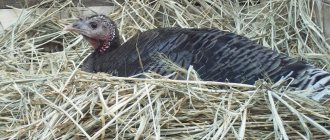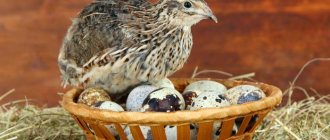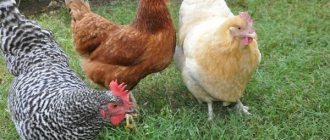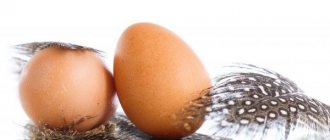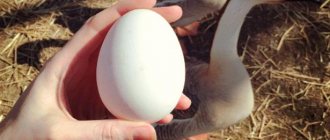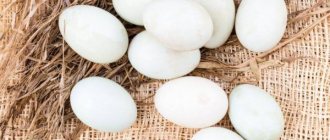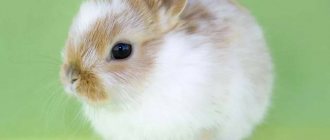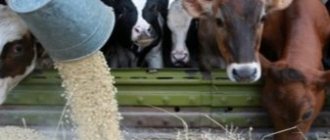At what month do quails start laying eggs? What conditions should be provided for good egg production? How difficult is this bird to care for? These questions are often asked by fans of such a product as quail eggs. The latter are an exceptional find for the human body, as they contain a large amount of vitamins and a lot of useful microelements.
Benefits of quail eggs
Quail eggs are an excellent remedy for improving memory, normalizing the functioning of the nervous system and increasing immunity. They bring great benefits to the child’s body: they stimulate mental activity, help in the treatment of respiratory diseases; in the body of a pregnant woman, they replenish calcium reserves and protect tooth enamel from destruction.
For long-term prevention purposes, it is recommended to eat two eggs a day. By the way, this procedure is successfully practiced among Japanese schoolchildren and helps improve memory, improve vision and better development in general.
Such a universal product also solves male issues, namely increases potency. The Germans have long tried one healing recipe. They drink 4 raw quail eggs on an empty stomach and wash it down with a tablespoon of a homemade drink - vodka infused with walnuts.
Egg-bearing breeds
To obtain a valuable product, so to speak, directly from production facilities, many farmers start unique birds on their farms and almost immediately wonder at what age quails begin to lay eggs. But the fact is that their egg production depends not only on the age and conditions of keeping the birds, but also on the breed.
The most common egg breed is the Japanese quail. Domesticated 1000 years ago, it lost the effect of incubation, acquiring an equally valuable quality - high egg production: more than 300 eggs per year, weighing 10-12 g each.
The live weight of males of this breed is 110-120 g, females are slightly larger than cockerels - 130-150 g. Such hens begin laying eggs in 40-45 days. These quails are not capricious in terms of keeping conditions and are fundamental when breeding new breeds.
Marbled quail. It is identical to the Japanese breed, from which it differs only in color.
English black. In body weight it exceeds the Japanese by 6-8%, while being significantly inferior in egg production. They differ from other species by their black plumage, which has a slightly brown tint. The weight of females is 180-200 g, males - about 170 g. During the year, about 280 eggs can be obtained from English black quail.
Kaytaverse. This is an Estonian bird with exceptional egg production (310 eggs per year) and meat yield. The weight of the chicken is 190-210 g, the cockerel is 160-180 g.
More information about quail breeds
The most important point in determining egg production is the breed of quail. After all, there are also a large number of them. Those breeds that are specialized in egg production produce 300 or even more eggs in one year. Although the quails themselves have a very small weight, only about 100 - 120 grams.
Table 1. Egg-laying quail breeds
Japanese quails are quite large birds. Their weight can reach up to 200 grams, but this happens in rare cases. Most quails do not weigh more than 150 grams.
This breed has a high level of egg production. They begin to produce eggs at the age of two months, having the ability to lay about 250 eggs per year. Japanese quails lay eggs directly on the floor, and always at the same time. The weight of the eggs reaches 10 grams.
Marbled quails reach a weight of up to 200 grams. Males are lighter, about 150 – 170 grams. In one year, marbled quails produce almost 350 eggs. Their eggs are larger than those of the Japanese breed - up to 20 grams.
The marbled breed is more suitable for producing eggs for sale. To get 1 kg of eggs, you will need only 2.5 kg of feed. Meanwhile, the price of quail eggs is now quite high.
Black English Quail
White English Quail
Table 2. Weight gain of newborn quails of egg-laying breeds
Table 3. Meat breeds of quail
This breed is called pharaohs and albinos. They are originally from Texas, which is where they got their name. Compared to egg-laying breeds, the Texas White is more powerful. The weight of females reaches 460 g, and males - 360 g.
Eggs are laid from two months, and in this breed they have medicinal properties: they improve digestion, brain activity, and strengthen the immune system. Their meat is dietary and quite tasty.
Table 4. Gain in quail of meat breeds
About egg production of quails
Possessing such a quality as rapid growth, quails begin to lay eggs at the age of 35-40 days. The live weight of females at this moment is only 100 grams. When the quails begin to lay eggs, the number of eggs will be small - only up to 8 eggs per month. But then this figure will increase, and in the next 6 months one hen will produce about 25 eggs, therefore, their number per year will be 300.
By the way, egg mass (the average weight of 1 egg multiplied by the number of eggs) is 20-23 times greater than the weight of a laying hen, while for chickens the same figure is 8.
Often eggs from young hens have soft shells. This is due to the immaturity of the body. With proper care of the bird, the problem is solved within 2 weeks.
In terms of nutritional quality, quail eggs are several times better than chicken eggs and, by the way, do not cause allergies. In addition, such a product does not spoil because it contains lysozyme, a valuable amino acid that does not allow microflora to develop. Therefore, quail eggs can be stored at room temperature.
Productivity
Texas quail very quickly enters the stage of sexual maturity, due to which the hens begin to lay eggs quickly. According to farmers, the first egg from them is obtained at the age of 45-55 days. The eggs are larger than usual, weight 15-16 grams. (there is information about a record 25 grams, but this is rare). Egg production is 220-260 eggs per year (4-6 eggs per week).
Peak productivity in laying hens occurs at 5-6 months, after which it is rational to replace them with new ones to improve their performance.
The photo shows a 22-gram egg from the farm of Marina M, Kemerovo region.
The live weight of the female is 420-450 g; with targeted selection for size characteristics, experienced poultry farmers achieve an average weight in the flock of 550-700 g. Males are somewhat smaller.
When fattening Texas whites for meat, it is advisable to slaughter them at 4-5 months: both in terms of feed conversion and in terms of product tenderness.
Features of egg laying in quails
In order to obtain eggs from individuals older than 1.5 months, it is necessary to form an egg-laying flock of hens. The presence of cockerels in it is possible, but not necessary. This only affects productivity when the male is replaced. And in this case, you will have to wait a week before egg laying resumes. In addition, it is believed that an unfertilized egg has greater nutritional value.
When will the quails start laying eggs? Quails usually lay eggs in the afternoon or late evening. In such an important process, the bird adheres to a certain routine: it lays 1 egg for 5-6 days, then takes a break for a couple of days.
If egg production is absent for a long period, one should ask the question: why do young quails not begin to lay eggs? The birds may have been stressed during transport, so you will need to be patient for two weeks while the new flock settles in and acclimates.
Life expectancy of quails in captivity
The average life expectancy of quails at home is 3-4 years. With proper nutrition - up to 6 years.
The most productive period of egg production in birds is up to 10-12 months. During the life period of 1-1.5 years, the ability to lay eggs drops to 50% of the maximum level. Upon reaching two years of age, females lay few eggs or stop laying.
Old quail eggs are unsuitable for incubation: they hatch into weak and non-viable chicks. Experienced poultry farmers recommend using quails for egg production and breeding of offspring for no more than 1 year.
Be sure to read:
The benefits of quail eggs and harm to the human body, how much you can eat and how to use them
Males up to 3 months old are considered the best for fertilizing hatching eggs. At 4 months, males are replaced with new ones.
When do quails begin to lay eggs when reared at home?
An important factor in stable egg production is the correct conditions for caring for quails:
- The bird must be kept in spacious cages, the optimal size of which for a flock of 30 individuals is 750 x 350 mm with a height of 250 mm.
- It is worth considering that overcrowding will negatively affect egg production. Therefore, it is recommended to raise only similar-aged flocks in each individual cage.
- The purchased bird should be kept separately from the main flock for a month, in a different room. And having adapted, the quails will resume egg laying in about a week.
- It is highly not recommended to transplant them to another place, add new individuals to an already established group, or move cages with birds to another place, since this action causes stress in the birds. Loud noises also have a frightening effect on quail.
How to improve egg production?
To restore stable egg laying, it is important to understand the reason for the decline in egg production. Then this problem can be fixed.
Quails need to be fed balanced and regularly. An adult female should eat 30 g of food three times a day. You should not overfeed the bird, as with excess weight it will stop laying eggs.
Monitor the microclimate in the bird cage, maintain the required temperature and proper lighting.
In addition, to increase egg production, you can use a special type of feeding of quails, it is called “contrasting”. With this type of feeding, food is given to the birds 3-4 times a day at the same time. In the intervals between meals, there should be no food in the quail feeders at all.
If females lay small eggs, the reason may be a lack of protein in their body. However, if this happens in a young female at the very beginning of egg laying, then this is quite normal.
Continuous laying of eggs can last up to two years, but it is important to know that when quails are kept for more than a year, their immunity decreases, they get sick more often, and the meat becomes less quality and tasty.
We invite you to watch the video “How to increase the egg production of quails”, from which you can learn more about the reasons for the decline in egg production and how many eggs each breed of quail lays per year:
How long does it take for quails to start laying eggs?
The most comfortable temperature for raising laying hens is 20-22 °C. A lower or higher indicator negatively affects egg production. The optimal level of air humidity should be 60-70%.
It is also important to provide adequate lighting in the poultry house for 16-17 hours a day. If the daylight hours are less than 12 hours, the quail will no longer supply the farmer with eggs that are useful and in demand among consumers. Artificial additional lighting can correct the problem and help answer the question of when the quail will start laying eggs. However, it is worth considering that if the light is too bright, timid birds may become stressed and begin to peck at each other.
Drafts can also be detrimental to them. Having a negative effect on a fragile organism, they cause the loss of feathers and, as a result, baldness. Egg production in this case leaves much to be desired.
Selecting eggs for incubation
Most quails have lost their maternal instinct; only 3% of them are able to hatch eggs. Therefore, poultry farmers mainly use an incubator to produce offspring. For further breeding of quails, only samples no older than 7 days of regular shape and having an average weight are used. When selecting material to put into the incubator, preference is given to eggs with slight pigmentation and no limescale build-up. Samples with large dark spots or skin that is too light are not used for incubation. Also, specimens that are too small are not placed in the incubator, since they cannot develop a viable chick.
Before placing material into the incubator, it is recommended to additionally check it using an ovoscope. Samples that have the following shortcomings are subject to mandatory rejection:
- cracks in the shell,
- two yolks,
- incorrect position of the yolk (in which it is lowered to the sharp end of the shell or attached to one of the walls),
- incorrect location of the air chamber (on the side or at the sharp end of the shell),
- the presence of spots on the yolk or white.
It should also be remembered that only clean eggs can be placed in the incubator, since samples with droppings can deteriorate during incubation and infect neighboring ones with infection. If at the time of placing the material in the incubator there is not a sufficient number of clean samples, you can take any suitable for incubation and treat them with a 3% solution of potassium permanganate.
About the composition of feed
The stability of egg production is affected by adequate nutrition, which should consist of balanced feed. This is well-ground corn and wheat with the possible addition of 10-15% of other grains or special complete feed. As a mandatory additive, it is recommended to use chalk, soybean or oil meal, fish and meat and bone meal containing a large amount of amino acids. Eating mineral-rich gravel and shells will give the shell strength. Poultry houses should always have fresh water.
Why don't quails lay eggs?
Reduced egg production can occur in birds of any age and can last a very long time. If even healthy-looking females stop laying eggs, then you need to understand the reason for this behavior.
The main reasons for the decline are related to improper care and maintenance of laying hens.
There are a number of mistakes that breeders make. It is because of them that a decline in egg production in laying hens can begin, so consider the following:
- Long daylight hours or lack of light. Females lay eggs only in the light, so it is very important to properly create artificial lighting for them. The length of daylight directly affects the productivity of laying hens. It is not recommended to turn on the light in the coop for more than 18 hours at a time. This applies to any time of year;
- The coop is too cold or hot. If the quail has stopped laying eggs, it is possible that the temperature in the room is not maintained. For harmonious growth and development, individuals must live in a chicken coop with a temperature within 18-22˚C. Sudden temperature changes are also detrimental to females. Therefore, you should avoid drafts and insulate the chicken coop more thoroughly in winter.
- Insufficient humidity. The humidity in the room should be within 75%. Humidity above or below the set value has a detrimental effect on the health of individuals;
- Unbalanced diet. Feed for laying hens should be balanced and rich in protein. If individuals do not lay eggs well, you need to add more chalk or small pebbles to their dry food. They improve digestion and have a good effect on health;
- There is not enough space in a chicken coop or cage. Birds do not like cramped spaces, so, if possible, they should always be separated. Otherwise, they begin to interfere with each other and peck. The cage needs to be made spacious and high;
- Noise and stress. Birds cannot tolerate loud sounds and are afraid of unfamiliar surroundings. Therefore, after transportation, egg production may decrease for a short time;
- Diseases. You can tell that a bird is sick by the shape and composition of quail eggs, as well as the appearance of the shell. In case of strange behavior of birds, you should consult a veterinarian.
Proper feeding for good egg production
Quails should be provided with 3 meals a day. At the same time, the consumption of food, always fresh, per female is approximately 20-30 grams, the male consumes about 18 grams. The rest of the day, feeders should be clean and empty. The lack of food available around the clock will ensure a good appetite when feeding and will not allow birds to overeat. After all, overfeeding leads to obesity and, as a result, a decrease in egg production.
It is worth considering that with an unbalanced diet and a sudden change from one type of food to another, quails may stop laying eggs. Moreover, you will have to wait up to 2 weeks for the quails to start laying eggs. During this time, their body will be able to fully recover, but the diet must, again, be properly balanced.
Why don't quails lay eggs? The reason for this may also be the age factor, when the female’s body simply wears out. After a year, the egg production rate may drop to 50%, and laying hens should be replaced with young ones, and old chickens will be used for meat. Quails also stop laying eggs during molting.
Problems with laying hens
Laying quails are very susceptible to external factors. At low temperatures, constant stress, poor nutrition and illness, they may produce fewer eggs than is typical for their breed, or stop laying altogether. Also, a farmer in such conditions may note a decrease in the quality of the eggs themselves: birds may produce material without shells, samples with defects, or limescale deposits. If such problems arise with the productivity of the poultry flock, the farmer needs to contact a veterinarian as soon as possible and, if possible, eliminate the factors that have a harmful effect on the laying hens. Then their productivity can be quickly restored.
Under appropriate housing conditions, the female brings 20-25 pieces.
Why do they stop laying eggs?
There are several factors due to which a sharp decrease in the productivity of laying hens can be observed. These include:
- Low temperature in the poultry house. If it drops below +20 degrees, quails first reduce egg production and then stop producing eggs altogether.
- Incorrect lighting conditions in the poultry house. Normally, birds should have 18 hours of daylight. If this rule is not followed, the females may stop laying eggs.
- Change of food. May cause a short-term stop in egg production in quails. Usually observed when the new food does not contain the required amount of nutrients.
- Stress, overcrowding of the poultry house, change of male in the poultry flock. Can stop the egg production process for 6 days.
- Diseases and injuries of birds, molting period.
Birds may also stop laying eggs due to natural aging. It should be remembered that normally female quails produce eggs for only 10-30 months, while their productivity gradually decreases from the 10th month. After this period ends, they, as a rule, cannot produce viable offspring, so they stop laying eggs.
Why does a decrease in egg production occur?
There are also a number of factors due to which quail productivity decreases, but egg production does not stop completely. These include:
- excessive humidity in the room (reduces the productivity of birds and too dry air in the room);
- the presence of drafts in the poultry house (this factor also leads to the loss of feathers by the bird);
- transporting birds to new poultry houses;
- increased noise near poultry houses;
- lack of protein in quail food.
The presented factors, as a rule, have a short-term effect on birds. When they are eliminated, the egg production of quails is restored. Whereas illnesses and injuries can lead to the fact that the hen will lose the ability to produce eggs forever.
What problems can there be with eggs?
Young females may have various egg defects. These include:
- The appearance of eggs with a thin shell or without a shell in a soft bag. Indicates a lack of calcium in the laying hen’s body. Usually eliminated by adjusting the bird's diet. Read here what to do if chicken eggs have thin shells.
- The presence of large dark spots on the shell or a complete absence of pigmentation on the shell. Often found in young females, it indicates an undeveloped oviduct.
- The presence of limescale and calcareous shells on the shell. Usually indicates an improper diet for the bird.
- Irregular shape and size of eggs. It can be observed when there is a lack of protein in the diet of females, or the presence of injuries or diseases of laying hens. Samples of this type are subject to rejection, since their irregular shape leads to the development of deformities in the embryos.
- The presence of two yolks in eggs (diagnosed by ovoscopy). Indicates excess protein.
Such problems often occur during the first month after the start of laying in laying hens. Normally, they go away with diet correction already in the second month. If such defects persist, the bird should be shown to a veterinarian. If there are injuries or illnesses, it is better to raise it for meat and no longer use it for breeding quails.
Low egg production due to disease
Be sure to periodically inspect quails for disease, which can also cause a lack of egg production. Healthy quails are always mobile and active, characterized by a good appetite. They have smooth, shiny plumage, without ruffles or hairiness, and their wings and legs move well. Being a bird with a fairly high immunity, if poorly cared for, quail can still become infected with various infections that enter the body with water, food and air when replenishing the flock.
Newcastle disease, which leads to the death of the bird within a few hours, poses a huge danger to quails. Infection is caused by contact of a healthy individual with a sick one, and infection through droppings is also observed. The spreaders of the disease are dogs, rats, and waterfowl.
Sick quails experience a state of constant drowsiness, difficulty breathing, lack of appetite and mucus discharge from the beak. In such cases, mandatory isolation of the infected individual and consultation with a veterinarian is necessary.
Main reasons
Here are the main factors that have the greatest impact on egg production.
Quail laying hen
Lighting and optimal daylight hours
To maintain high egg production, you need to strictly adhere to a specific light regime. For quails, the duration of daylight hours should be between eighteen and twenty hours. On my farm, the total daylight hours have been twenty hours for many years now. However, this time is divided into certain stages:
- from six o'clock in the morning until midnight the lights are on;
- then a break from 24 to 2 hours;
- at 2 it turns on again until 4;
- at 4 o'clock it turns off again until 6;
- then again in a circle.
To put it simply, the nightly four hours required by quails are divided into 2 parts with an interval of two hours. This is necessary so that the quails do not starve at night.
Laying quails have a fairly high metabolism and if they are left without light for four hours, they may become hungry, and this will negatively affect egg production. When the light turns on at night, the quail has the opportunity to have a little snack and again have 2 hours of rest.
An incorrect statement - that quails do not require night rest and the light can be on around the clock can lead to the fact that laying hens will gradually begin to become exhausted, and you should not expect good egg production from such individuals.
In turn, quails are also negatively affected by too bright light, since these birds are accustomed to living in dark places. When organizing lighting for your feathered pets, proceed from the calculation of 4 W per square meter
This is very important, because in very bright lighting, the bird behaves restlessly and even aggressively, and pecking fights become more frequent. Note that to prevent cannibalism in a quail flock, it is necessary to use cages that have shaded areas so that calm individuals can hide in them from aggressive ones.
This can only be done in a cage that is lined on 3 sides. If the cage is made entirely of mesh, then such conditions cannot be ensured.
